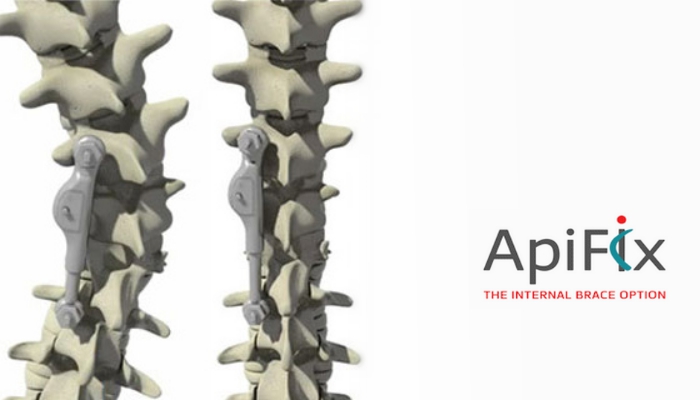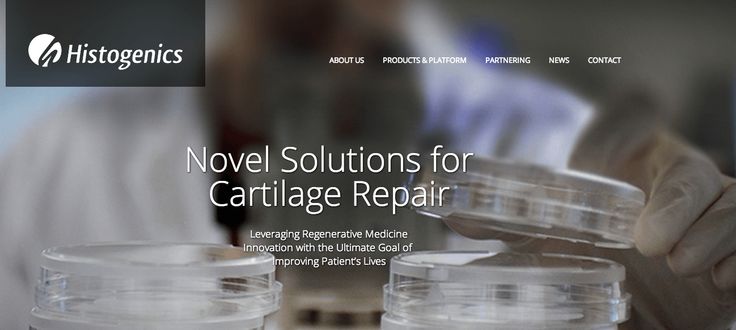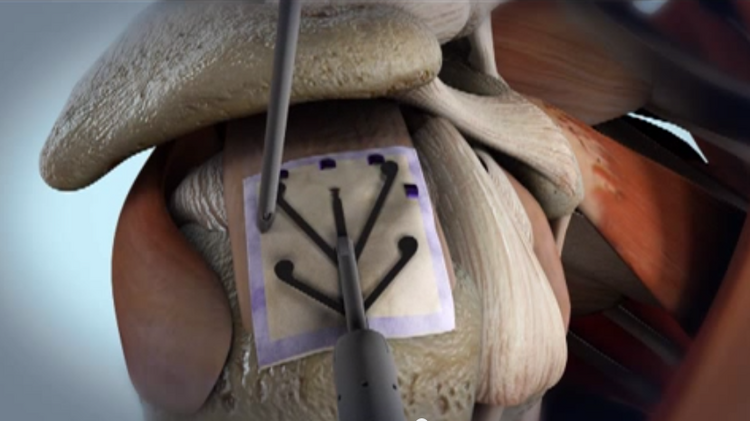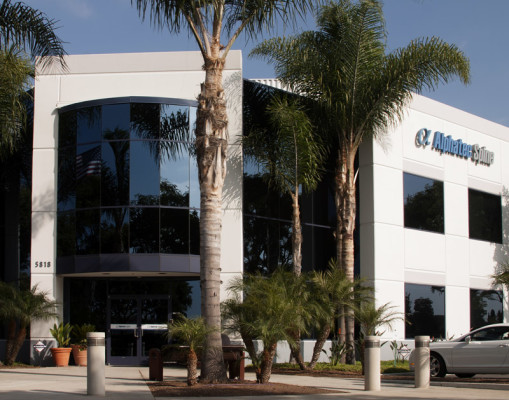MARIETTA, Ga., Sept. 15, 2016 /PRNewswire/ — MiMedx Group, Inc. (NASDAQ: MDXG), the leading regenerative medicine company utilizing human amniotic tissue and patent-protected processes to develop and market advanced products and therapies for the Wound Care, Surgical, Orthopedic, Spine, Sports Medicine, Ophthalmic, and Dental sectors of healthcare, announced today that the Company urged the Food and Drug Administration (“FDA”) to reconsider its Draft Guidances on Minimal Manipulation and Homologous Use of Human Cells, Tissues, and Cellular and Tissue Based Products (HCT/Ps) during hearings conducted on September 12 and 13, 2016.
Parker H. Petit, Chairman and CEO of MiMedx, said, “I am encouraged that the FDA agreed to hear input from industry, academia, healthcare practitioners and patients. As expected, the almost universal sentiment from industry and the scientific community was that the Draft Guidances should be amended significantly or withdrawn in their entirety. Many presenters also noted that some provisions of the Draft Guidances are outside the scope of FDA’s authority to regulate HCT/Ps.”
Summary of the Majority of Industry, Clinical and Scientific Sentiments Expressed During the Hearing:
- Draft Guidances introduced new concepts or proposed changes to the current regulatory scheme, which is inappropriate for guidance. Therefore, Draft Guidances cannot be lawfully adopted in their current form.
- Many of the principles in the Draft Guidances are scientifically unsound. Specifically, most presenters objected to the characterization of tissue as either structural or nonstructural, noting that many tissues have multiple functions, both structural and nonstructural.
- Multiple objections to the concept that each tissue type has a single “main function.”
- Draft Guidances should be amended significantly or withdrawn in their entirety;
- If FDA wants to change the way tissue products are regulated, it must do so through a formal notice and comment rulemaking process.
- For tissues that don’t currently qualify for regulation under Section 361, many presenters advocated for a new, abbreviated regulatory pathway that would take into account the unparalleled safety record of tissue products and the needs of patients for new and improved products.
- Many physicians and patients testified as to the safety and efficacy of HCT/Ps.
An overwhelming majority of the parties who testified at the hearing, including the American Association of Tissue Banks (“AATB”), called for notice and comment rulemaking or stated that the Draft Guidances constitute major changes to the current regulatory scheme. A small minority of presenters called for greater restrictions on the use of HCT/Ps. This minority was roughly a dozen individuals, at least eight of whom were Organogenesis’ current or former associates, including its Senior Vice President of Regulatory & Government Affairs, its former President and CEO, one of its Tissue Bank Directors, its former Clinical Program Manager, three members of its speakers bureau, and a consultant that was formerly its Director of Technology Implementation.
Petit commented, “Organogenesis continues to attempt to discredit human tissue allografts, and in particular, amniotic membrane allografts. The basis for their position is that almost 20 years ago their Apligraf® product went through the Premarket Approval (“PMA”) regulatory pathway whereas human tissue allografts are subject to a different regulatory pathway, namely Section 361 of the Public Health Service Act, which they deem to be inferior. This argument is baseless, and it reflects negatively on the FDA’s regulatory history and expertise. Also, this concept has been previously rejected by the Centers for Medicare and Medicaid (“CMS”), the Department of Veterans Affairs (“VA”), and many thousands of physicians.”
Draft Guidances Cannot Lawfully be Adopted in Their Current Form
MiMedx does not believe the FDA lawfully can adopt the Draft Guidances on minimal manipulation and homologous use in their current form because the FDA cannot reverse its well-established practice and effectively amend existing substantive regulations via informal guidance.
Petit stated, “Simply put, the issuance of these Draft Guidances in their existing form requires notice-and-comment rule making with Congressional oversight and possible Office of Management and Budget (“OMB”) review. Similarly, the majority who testified at the hearings alleged that the Draft Guidances introduce new concepts that are contrary to the existing regulations and/or FDA’s prior positions.”
During the Monday, September 12, 2016 session, Frank Wilton, President & CEO of the AATB, called upon the FDA to formally withdraw the Draft Minimal Manipulation Guidance document. Further, he asserted that if the FDA wished to proceed with their new “main function concept,” then the FDA must do so via the formal rulemaking process. Mr. Wilton also pointed out numerous ways in which the provisions in the Draft Guidance on Homologous Use deviated from positions taken previously by the FDA.
Many of the Principles that Underlie the Guidance Documents are Scientifically Unsound
Bill Taylor, President and COO of MiMedx, commented, “We also believe that many of the principles that underlie the Draft Guidances are scientifically unsound. For example, the Draft Guidance on Minimal Manipulation postulates that HCT/Ps must be intended for the HCT/P’s ‘main function’ in order to qualify for regulation under Section 361 of the Public Health Service Act (“PHSA”). This new concept is not based on science. It ignores the fact that many HCT/Ps have more than one important function, and can have both structural and non-structural functionality in the donor. An overwhelming number of the parties who commented on the Draft Guidance on Minimal Manipulation during the initial comment period, as well as the parties that testified throughout the course of the hearings, criticized this aspect of the Draft Guidance.”
“Specifically with respect to amniotic membrane, both the Draft Guidance on Manipulation and the Draft Guidance on Homologous Use characterize amniotic membrane as a purely structural tissue with limited, purely structural functions, which is not correct,” added Petit.
During the Tuesday, September 13, 2016 session, Dr. Rebecca Baergen, a leading expert in placental pathology, author of Manual of Bernirschke and Kaufmann’s Pathology of the Human Placenta (2005, 2011) and co-author of Pathology of the Human Placenta (2006, 2012), which generally is recognized as the most comprehensive and authoritative text in the field, testified to the myriad functions of amniotic membrane in the donor, both structural and nonstructural, none of which is more important than another.
Petit stated, “Another instance of the Draft Guidances not comporting with science is one of the examples included in the Draft Guidance on Minimal Manipulation that characterizes amniotic membrane powder as being more than minimally manipulated because it ‘alters the tissue’s physical integrity, tensile strength, and elasticity that allow it to serve as a membranous barrier.’ This example is problematic for a number of reasons, including that it gives no consideration whatsoever to the labeled indication of the product. Suppose, for example, the product was labeled for homologous uses as an anti-scarring and anti-inflammatory agent, and it was not intended to serve as a membrane barrier. These are explicit non-structural functions the FDA has already acknowledged.”
“But more significantly, the FDA does not present any scientific evidence to support its contention that micronization of amniotic membrane reduces its tensile strength and elasticity,” noted Taylor. “In fact, two years ago, MiMedx presented the FDA with three sets of test results from independent laboratories demonstrating that micronizing its allograft products does not reduce their tensile strength and modulus of elasticity. The FDA has never refuted or even acknowledged receipt of those test results.”
During the Monday, September 12, 2016 session, Lisa A. Ferrara, Ph.D., President and CEO of OrthoKinetic Testing Technologies, LLC, which is one of the independent laboratories that performed these tests, explained that tensile strength and elasticity are material properties of amniotic membrane and, as such, do not vary with the size of the sample. Dr. Ferrara also presented the results of her lab’s testing of MiMedx’s micronized product, as well as the results of the testing by the other two independent laboratories, all of which confirmed that processing amniotic membrane into smaller pieces does not alter its tensile strength and elasticity.
“In summary, we believe this and other scientific evidence presented at the hearing is irrefutable and should preclude adoption of these Draft Guidance documents in their current form,” said Petit.
Guidance Documents are Non-Binding
The Company reported that even if the Draft Guidances were finalized in their current form, they are non-binding on the FDA or industry. Page one of each of the Draft Guidance documents provides as follows: “This draft guidance, when finalized, will represent the current thinking of the Food and Drug Administration (FDA or Agency) on this topic. It does not establish any rights for any person and is not binding on FDA or the public. You can use an alternative approach if it satisfies the requirements of the applicable statutes and regulations.”
In his remarks at the FDA workshop held on Thursday, September 8, 2016, Stephen Bauer, PhD, Chief of the Cellular and Tissue Therapy Branch (CTTB), U.S. Food and Drug Administration, likewise characterized guidance as “non-binding advice.”
Taylor noted, “MiMedx continues to believe that its marketing of its products as Section 361 HCT/Ps is consistent with the applicable statutes and regulations.”
About MiMedx
MiMedx® is an integrated developer, processor and marketer of patent protected and proprietary regenerative biomaterial products and bioimplants processed from human amniotic membrane and other birth tissues and human skin and bone. “Innovations in Regenerative Biomaterials” is the framework behind our mission to give physicians products and tissues to help the body heal itself. The MiMedx allograft product families include our: dHACM family with AmnioFix®, EpiFix® and EpiBurn® brands; Amniotic Fluid family with OrthoFlo brand; Umbilical family with EpiCord™ and AmnioCord™ brands; Placental Collagen family with CollaFix™ and AmnioFill™ brands; Bone family with Physio® brand; and Skin family with AlloBurn™ brand. AmnioFix, EpiFix, and EpiBurn are our tissue technologies processed from human amniotic membrane; OrthoFlo is an amniotic fluid derived allograft; EpiCord™ and AmnioCord™ are derived from the umbilical cord; Physio is a unique bone grafting material comprised of 100% bone tissue with no added carrier; AlloBurn is a skin product derived from human skin designed for the treatment of burns; and CollaFix, our next brand we plan to commercialize, is our collagen fiber technology, developed with our patented cross-linking polymers, designed to mimic the natural composition, structure and mechanical properties of musculoskeletal tissues in order to augment their repair.
We process the human amniotic membrane utilizing our proprietary PURION® Process, to produce a safe and effective implant. MiMedx proprietary processing methodology employs aseptic processing techniques in addition to terminal sterilization. MiMedx is the leading supplier of amniotic tissue, having supplied over 700,000 allografts to date for application in the Wound Care, Burn, Surgical, Orthopedic, Spine, Sports Medicine, Ophthalmic and Dental sectors of healthcare.
Safe Harbor Statement
This press release includes statements that look forward in time or that express management’s beliefs, expectations or hopes. Such statements are forward-looking statements within the meaning of the Private Securities Litigation Reform Act of 1995. These statements include, but are not limited to the Company’s position that different regulatory pathways are neither inferior nor superior to each other, that the issuance of the Draft Guidance documents in their existing form would constitute a substantive rulemaking that could only be properly completed through notice-and-comment rulemaking, that many of the principles underlying the draft guidance documents are scientifically unsound, and that the scientific evidence presented at the hearing is irrefutable and should preclude adoption of the draft guidance documents in their current form. Among the risks and uncertainties that could cause actual results to differ materially from those indicated by such forward-looking statements include that regulators such as the FDA may determine that certain regulatory pathways are superior or grant certain privileges over other pathways used to bring products to market, that it could be determined that the draft guidances in their existing form do not constitute a substantive rulemaking or that the draft guidance documents are finalized even though they do constitute a substantive rulemaking and/or are scientifically unsound, and the risk factors detailed from time to time in the Company’s periodic Securities and Exchange Commission filings, including, without limitation, its 10-K filing for the fiscal year endedDecember 31, 2015 and its most recent 10Q filing. By making these forward-looking statements, the Company does not undertake to update them in any manner except as may be required by the Company’s disclosure obligations in filings it makes with the Securities and Exchange Commission under the federal securities laws.
SOURCE MiMedx Group, Inc.
Related Links
http://www.mimedx.com








